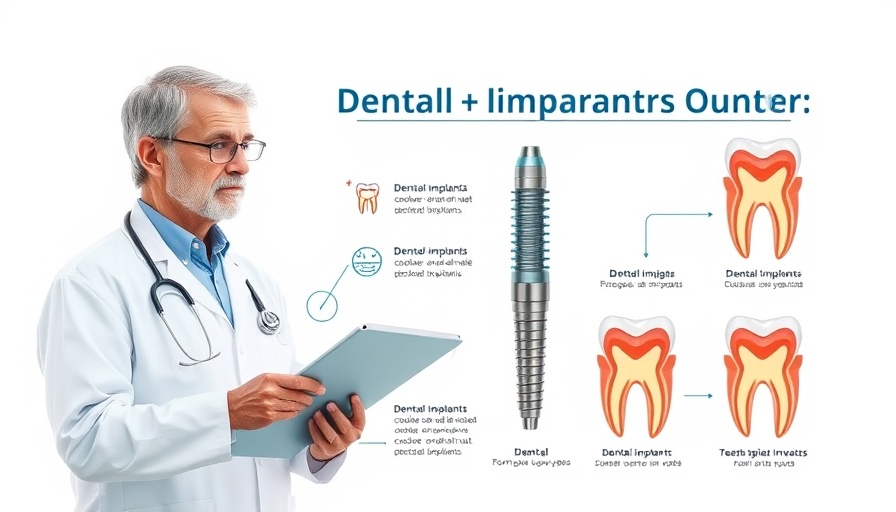
Understanding Dental Implants vs. Bridges: A Comprehensive Guide
When it comes to replacing missing teeth, individuals often face several options, including removable dentures, dental bridges, and dental implants. With these choices, it’s essential to evaluate which solution best meets your individual needs, especially as you navigate crucial decisions about oral health and aesthetics.
In 'Dental Implant Vs Dental Bridge, what's better?', the video delves into various tooth replacement options, prompting a deeper exploration of which solution might be the most suitable for you.
The Advantages of Dental Implants
Dental implants have become increasingly popular due to their ability to serve as a standalone solution for tooth replacement. Unlike bridges, which require adjustments to surrounding healthy teeth, implants are surgically fixed into the jawbone. This means healthier adjacent teeth remain intact, preserving their strength and longevity. Moreover, dental implants can simulate natural tooth functions better than any other option, allowing for improved chewing and speaking capabilities.
Bridges: Quick and Cost-Effective But with Drawbacks
Bridges present a viable alternative to implants, especially for front-tooth replacements, where appearances matter significantly. They typically require less time for a solution—often completed in just a few visits—and can be more cost-effective when multiple teeth need to be addressed. However, bridges do have inherent limitations; they depend on the strength of adjacent teeth for support. This dependency can create concerns about long-term sustainability and the potential need for further dental work down the line.
The Emotional Element: Dental Solutions and Self-Confidence
Choosing between dental implants and bridges often involves weighing not just the physical implications, but also the emotional aspect of one’s smile. For many, a full set of strong, aesthetically pleasing teeth translates to increased self-confidence. Patients sometimes overlook this emotional connection; understanding it can profoundly impact the decision-making process. A healthier, restored smile can lead to improved social interactions and a positive self-image, particularly for those in the 40-70 age range, who may feel their appearance is more noticeable as they age.
Potential Risks and Considerations for Implants
While dental implants offer numerous advantages, it’s crucial to acknowledge the potential risks involved. Factors such as bone density, need for bone grafting, and time considerations can complicate the implant process. Moreover, implants typically require a thorough dental assessment, including CT scans to evaluate suitability. Patients should discuss these factors with their dentist to understand timelines, costs, and treatment plans tailored to their unique situations.
Making an Informed Decision: Consult the Experts
In the end, the choice between dental implants and bridges should not be taken lightly. An experienced clinician, well-versed in all available options, can guide you through the complexities of dental restoration. They will consider your overall oral health, aesthetic preferences, and budget constraints to help you make an informed decision that aligns with your lifestyle and goals. Don’t hesitate to ask questions and seek advice, as this information can empower you to take the next steps in your dental health journey.
Conclusion: Enhancing Your Smile and Your Life
Your smile is a vital aspect of your identity, influencing both how you feel about yourself and how others perceive you. Whether you ultimately decide on dental implants or dental bridges, it's essential to leverage the expertise of dental professionals and prioritize your health and appearance. Understand the advantages, limitations, and emotional factors surrounding your decisions. Start your journey to an improved smile today, and invest in the confidence that comes with knowing you’ve made the best choice for your dental health.
 Add Row
Add Row  Add
Add 




Write A Comment